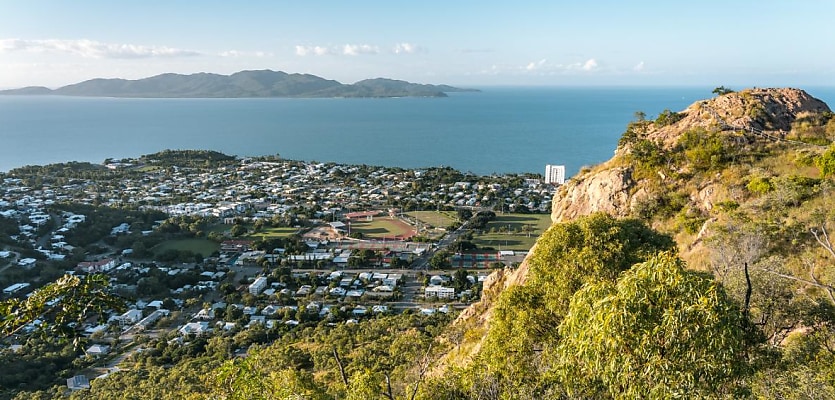Strong demand continues in Australia’s regional property market, with many city dwellers relocating to secure more affordable housing.
CoreLogic’s Home Value Index (HVI) reported the value of regional dwellings rose by 6 per cent in 2024, outpacing the combined capitals, which experienced a 4.5 per cent increase.
Among the capital cities, Perth led with a 19.1 per cent annual increase in property values, while regional Western Australia followed at 16.1 per cent, remaining a relatively more affordable option.
In Brisbane, the housing market surged by 11.2 per cent annually, and regional Queensland also saw its dwelling values grow by 10.5 per cent.
Similarly, Adelaide performed strongly with a 13.1 per cent annual increase, with regional South Australia seeing growth at 12.5 per cent.
In Sydney, property values saw modest annual growth of 2.3 per cent, with regional NSW trailing at 3.2 per cent.
The Victorian market was the only one that did not experience any growth in 2024, with Melbourne recording a -3 per cent decline and regional Victoria experiencing an even steeper drop of -2.7 per cent.
According to PropTrack senior data analyst, Karen Dellow, the appeal of regional markets lies in the rising property prices and cost-of-living pressures in capital cities.
“Regional Australia has been the beneficiary of a number of property market trends that have negatively affected the capital cities more significantly than the regional areas,” she said.
Dellow explained that the pandemic significantly boosted migration from the cities to the regions, which has helped drive up prices.
“Despite this, prices in the regions are still much lower than in the cities in most areas, and this is a major factor that has attracted city dwellers,” Dellow added.
PropTrack senior economist, Paul Ryan, said property sale prices in regional areas have climbed.
“Regional NSW and Victoria saw value uplifts early on in 2020 and have increased 53 per cent and 40 per cent, respectively in total, but much of the revaluation occurred prior to the past year,” he said.
“In WA, we saw markets respond to the same pandemic trends at a much later time – after lockdowns ended.”
CoreLogic reported a 12 per cent increase in the movement of people to regional areas over the past year, attributing the shift to flexible work arrangements, which allowed individuals to have improved living conditions outside major cities.
NAB’s customer data from the Regional Australia Institute (RAI) showed that the number of metropolitan residents moving to regional areas is nearly 20 per cent higher than pre-pandemic levels.
The data also revealed that the number of people moving from the city to a regional area is 1.8 per cent higher than during the peak lockdown periods.
Dellow also noted that city residents seeking more space or a getaway from lockdowns during the pandemic found affordable housing with larger properties in regional areas.
She said those already living in regional areas were satisfied and less likely to move interstate or to a city.
CoreLogic research director, Tim Lawless, said affordability, space and working arrangements were key factors contributing to the regional migration trend.
“Regional markets seem to be benefitting from a second wind of internal migration, along with an affordability advantage in some markets and what looks to be some permanency in hybrid working arrangements across some occupations and industries,” he said.
CoreLogic’s HVI report showed that by the end of 2024, the median dwelling price in Australia’s combined capital cities reached $896,372, whereas the median dwelling value in regional areas reached $657,652, reflecting a 7 per cent increase in the past year.
CoreLogic data also showed that regional areas are 15 per cent more affordable than major cities.
Additional data from the McGrath Report 2025 revealed the Sunshine Coast led net migration from capital cities at 11.8 per cent to March 2024, followed by the Gold Coast at 10.8 per cent.
Dellow noted that the Sunshine Coast and the Gold Coast are within 1.5 hours of their nearest capital cities, providing residents access to employment opportunities, major airports, and vibrant cultural scenes.
CoreLogic data showed that while Queensland posted strong results in 2024, Western Australia emerged as the standout performer, dominating the nation’s top growth markets.
Geraldton led regional growth in Western Australia with a 28.7 per cent annual increase, reaching a median price of $445,187, driven by its affordability and coastal appeal.
Bunbury followed with 24.5 per cent growth and a median of $640,344, benefiting from strong amenities and proximity to Perth.
Similarly, Busselton recorded 21.2 per cent growth, pushing its median price to $898,993.
Albany saw a 17.4 per cent rise to $586,741, while Broome’s outback coastal appeal increased 11.5 per cent, bringing its median to $587,068.
The surge made Western Australia the second-fastest growing investment destination, trailing Queensland, which saw a 36 per cent rise over the same period.
According to the Urban Development Institute of Australia WA (UDIA WA), interest from interstate investors climbed by 53 per cent over the past year, particularly from buyers based in Sydney and Melbourne.
REA Group’s director of economic research, Cameron Kusher, noted that despite significant price increases, Western Australian suburbs still provide compelling investment opportunities.
“Even though prices have gone up a lot in WA, if you’re an investor focused on the yield, it definitely still ticks the box, and you’re still getting that capital growth,” he said.
Looking forward, Lawless anticipates a potential rebound in the market nationwide.
He said that although ongoing affordability constraints may limit significant growth in 2025, lower mortgage rates and issues related to housing supply could support a gradual recovery in the housing market.
Similarly, Dellow believes the appeal of regional living will remain strong in 2025.
“The popularity of regional areas is unlikely to change, as the benefits of regional living outweigh capital city living for many,” Dellow said.









You are not authorised to post comments.
Comments will undergo moderation before they get published.